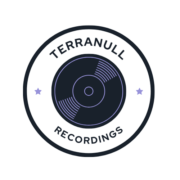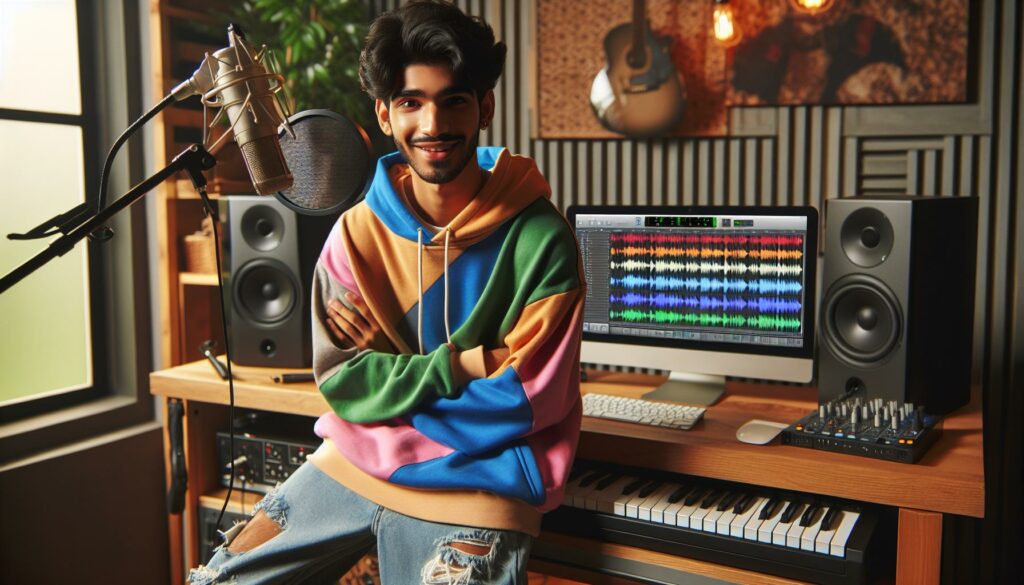Pop music has always captivated me with its infectious melodies and catchy hooks. I’ve spent years studying and creating pop songs and I can tell you that making hit music isn’t just about following trends – it’s about understanding the core elements that make songs memorable.
I’ll show you how crafting pop music combines science and artistry. From writing earworm choruses to producing radio-ready tracks modern pop music follows specific formulas while leaving room for creative expression. Whether you’re a bedroom producer or a studio engineer or an aspiring songwriter you’ll discover that making pop music is more accessible than ever thanks to affordable technology, and online resources.
Key Takeaways
- Creating pop music requires understanding core elements like catchy hooks, four-chord progressions, and verse-chorus structures, typically at 120-130 BPM
- Essential production equipment includes an audio interface, studio monitors, MIDI controller, and professional DAW software like Pro Tools or Logic Pro X
- Pop melodies combine repetitive patterns with strategic elements like step-wise motion, rhythmic patterns, and simple syllabic structures within the first 30 seconds
- Professional vocal recording requires proper microphone techniques, multiple takes, and a specific processing chain including EQ, compression, reverb, and pitch correction
- Mixing and mastering for commercial sound involves precise frequency balance, parallel compression, multiband processing, and targeting specific LUFS levels
- Successful pop music marketing requires consistent brand identity, strategic social media presence, playlist submissions, and engaging with target audiences across platforms
Make Pop Music
Pop music’s distinctive characteristics blend commercial appeal with artistic expression. Modern pop songs incorporate specific elements that create an immediate emotional connection with listeners.
Key Elements of Modern Pop Songs
Pop music thrives on these core components:
- Memorable hooks placed in the first 30 seconds of the song
- Four-chord progressions (I-V-vi-IV) featured in 80% of hit songs
- Verse-chorus structure repeated 3-4 times
- Bass-driven beats at 120-130 BPM
- Layered vocal harmonies with processed effects
- Short phrases of 8-16 bars
- Digital instruments mixed with acoustic elements
- Compression techniques for radio-ready sound
Popular Song Structures and Patterns
Pop songs follow proven structural formulas:
- Intro (4-8 bars)
- Verse-Chorus-Verse-Chorus (32 bars each)
- Bridge section at the 2/3 mark
- Final chorus with variations
- Outro fade or hard ending
- ABABCB format (A=Verse, B=Chorus, C=Bridge)
- Pre-chorus buildup sections
- Post-chorus hooks or drops
- Middle-eight variations
- Extended instrumental breaks at 16 or 32 bars
| Song Section | Typical Duration | Purpose |
|---|---|---|
| Intro | 10-15 seconds | Hook establishment |
| Verse | 30-45 seconds | Story development |
| Chorus | 20-30 seconds | Main message |
| Bridge | 15-20 seconds | Contrast creation |
| Outro | 10-15 seconds | Resolution |
Essential Equipment for Pop Music Production
Creating professional-quality pop music requires a strategic combination of hardware and software tools. I’ve identified the key components needed to establish an effective production setup.
Setting Up Your Home Studio
A well-equipped home studio starts with acoustic treatment using bass traps, diffusers and absorption panels. The essential hardware includes:
- Audio Interface: Focusrite Scarlett 2i2 or Universal Audio Apollo Twin for professional-grade sound conversion
- Studio Monitors: Yamaha HS8 or KRK Rokit 8 for accurate sound reproduction
- MIDI Controller: Akai MPK Mini or Native Instruments Komplete Kontrol for virtual instrument control
- Microphone: Shure SM7B or Audio-Technica AT2020 for vocal recording
- Studio Headphones: Sony MDR-7506 or Audio-Technica ATH-M50x for detailed monitoring
- Pop Filter: Stedman Proscreen XL for clean vocal recordings
- Monitor Stands: IsoAcoustics ISO-155 for speaker isolation
Must-Have Software and Plugins
The digital tools essential for modern pop production include:
- DAW (Digital Audio Workstation):
- Pro Tools for industry-standard recording
- Logic Pro X for Mac-based production
- FL Studio for beat-making focus
- Ableton Live for electronic elements
- Virtual Instruments:
- Serum for modern synthesizer sounds
- Kontakt for realistic instrument samples
- Omnisphere for diverse sound design
- Processing Plugins:
- Auto-Tune for vocal pitch correction
- FabFilter Pro-Q 3 for precise EQ control
- Waves CLA Vocals for professional vocal chain
- OTT for dynamic compression
| Equipment Type | Entry Level Cost | Professional Level Cost |
|---|---|---|
| Audio Interface | $159 | $899 |
| Studio Monitors | $299/pair | $699/pair |
| MIDI Controller | $119 | $599 |
| Microphone | $99 | $399 |
| DAW Software | $99 | $599 |
Crafting Catchy Pop Melodies
Pop melodies combine repetitive patterns with unexpected elements to create instant earworms. I’ve identified specific techniques for crafting melodies that resonate with listeners while maintaining commercial appeal.
Writing Memorable Hooks
Hooks are 2-8 bar melodic phrases that capture attention within the first 30 seconds. I create hooks using:
- Step-wise motion with occasional leaps of 3-5 semitones
- Repetitive rhythmic patterns (triplets syncopation tresillo)
- Call-and-response phrases between sections
- Simple syllabic patterns (2-3 syllables per phrase)
- Strategic placement of high notes at emotional peaks
- Melodic contours that rise then fall
Developing Strong Chord Progressions
Pop chord progressions support the melody through familiar patterns that create emotional resonance. Here’s my approach:
| Common Progression | Example Songs | Emotional Effect |
|---|---|---|
| I-V-vi-IV | “”Perfect”” by Ed Sheeran | Uplifting hopeful |
| vi-IV-I-V | “”Stay With Me”” by Sam Smith | Melancholic yearning |
| I-IV-vi-V | “”Girls Like You”” by Maroon 5 | Energetic positive |
- Start verses with tonic (I) chord for stability
- Build tension in pre-chorus using dominant (V)
- Release to chorus with strong resolution
- Use secondary dominants for dramatic shifts
- Maintain consistent rhythm changes every 2-4 bars
- Add suspended chords for emotional emphasis
Producing Professional Pop Vocals
Professional pop vocals require precise recording techniques combined with strategic processing to achieve radio-ready sound quality. Here’s how I create polished vocal productions that meet industry standards.
Recording Techniques
Recording clean vocal tracks starts with proper microphone placement 6-8 inches from the singer’s mouth. I position the microphone slightly above nose level angled downward to minimize plosives. Here are essential recording practices:
- Use a pop filter to eliminate harsh consonants
- Record in a treated room with acoustic panels on walls
- Capture multiple takes for comp editing options
- Monitor headphone levels at 75-80% volume
- Record at -18 dB to leave headroom for processing
- Create separate playlist layers for lead backing vocals
- Track doubles slightly off-center for width
Vocal Processing and Effects
Modern pop vocals utilize specific processing chains to achieve clarity presence impact. Here’s my standard vocal effect sequence:
- Subtractive EQ: Cut below 100 Hz remove muddy frequencies
- Compression: 4:1 ratio with 2-4 dB gain reduction
- De-essing: Target sibilance between 6-10 kHz
- Saturation: Add harmonic content for warmth
- Reverb: Short plate 1.2-1.8 second decay time
- Delay: 1/8 note ping-pong for width
- Pitch correction: Subtle AutoTune settings for stability
- Parallel compression: Blend with dry signal
- Multiband compression: Control specific frequency ranges
- Limiter: Catch peaks without squashing dynamics
| Effect | Setting | Purpose |
|---|---|---|
| High-pass filter | 100 Hz | Remove rumble |
| Attack time | 5-10 ms | Preserve transients |
| Release time | 40-60 ms | Natural decay |
| Pre-delay | 15-25 ms | Separation from dry |
| Wet/dry mix | 15-20% | Subtle enhancement |
Mixing and Mastering Pop Songs
Pop music mixing requires a precise balance of elements to create a polished, radio-ready sound that captivates listeners. I’ll share specific techniques for achieving professional results in both mixing and mastering stages.
Achieving Commercial Sound Quality
Modern pop mixing starts with proper gain staging, setting levels between -18dB to -12dB on each track. I establish frequency ranges for key elements:
- Kick drum: 50-100 Hz for punch, 2-4kHz for attack
- Bass: 80-200 Hz for foundation, 1kHz for presence
- Lead vocals: 2-5kHz for clarity, 8-12kHz for air
- Synths: 200-800 Hz for body, 5-8kHz for brilliance
Critical mixing techniques include:
- Parallel compression on drums (3:1 ratio, 10ms attack)
- Multiband compression on bass (threshold -12dB)
- Serial compression on vocals (2 compressors, 2:1 followed by 4:1)
- Side-chain compression between kick and bass
- Automated volume rides on lead vocals
Final Production Polish
Mastering elevates the mixed track to commercial standards through specific processing:
- Linear phase EQ for transparent frequency adjustment
- Multiband compression settings:
- Low band: 20-150 Hz
- Mid band: 150-2kHz
- High band: 2-20kHz
- Stereo enhancement:
- Mid/Side processing
- Controlled widening above 150 Hz
- Limiting specifications:
- True peak ceiling at -1.0 dB
- Target LUFS between -9 to -6
- Release time of 50ms
- Fabfilter Pro-L2 for limiting
- Ozone Advanced for multiband dynamics
- Waves Linear Phase EQ for frequency balance
- Oxford Inflator for harmonic enhancement
Marketing Your Pop Music
Marketing pop music demands strategic planning to reach target audiences effectively. I’ve developed successful marketing strategies that balance artistic authenticity with commercial appeal.
Building an Artist Brand
A compelling artist brand creates immediate recognition through consistent visual elements, messaging and sonic identity. I focus on these key brand components:
- Visual Identity: Professional photos, logos and color schemes that reflect the musical style
- Brand Voice: Distinct communication style across social media platforms and press materials
- Artist Story: Authentic narrative highlighting unique experiences and musical journey
- Target Audience: Specific demographic profiles based on streaming analytics and engagement data
- Brand Values: Clear artistic principles that resonate with the target audience
- Digital Distribution
- Upload to major streaming platforms (Spotify, Apple Music, Amazon Music)
- Submit to relevant playlists through platforms like SubmitHub
- Register songs with performing rights organizations
- Social Media Marketing
- Create content calendars for Instagram, TikTok and YouTube
- Share behind-the-scenes content from recording sessions
- Engage with fans through Instagram Stories and Twitter polls
- Influencer Collaboration
- Partner with micro-influencers in similar genres
- Exchange music features with complementary artists
- Create collaborative content for cross-promotion
- Press Outreach
- Submit releases to music blogs and online magazines
- Create electronic press kits with high-res photos and bio
- Schedule interviews with relevant podcasts and radio shows
| Platform | Weekly Post Frequency | Content Type |
|---|---|---|
| 4-5 posts | Photos, Reels, Stories | |
| TikTok | 3-4 posts | Short-form videos |
| YouTube | 1-2 posts | Music videos, vlogs |
| 5-7 posts | Updates, engagement |
Creating pop music is an exciting journey that combines artistic vision with technical expertise. I’ve shared my insights into every aspect of the process from songwriting and production to marketing and distribution. With dedication practice and the right tools you’ll be well-equipped to craft your own pop hits.
Remember that while following trends can help your music stay relevant it’s ultimately your unique perspective that’ll make your songs stand out. Take these guidelines as a foundation but don’t be afraid to experiment and develop your own signature sound.
Now it’s your turn to take these techniques and start creating. The world of pop music is waiting for your voice.



